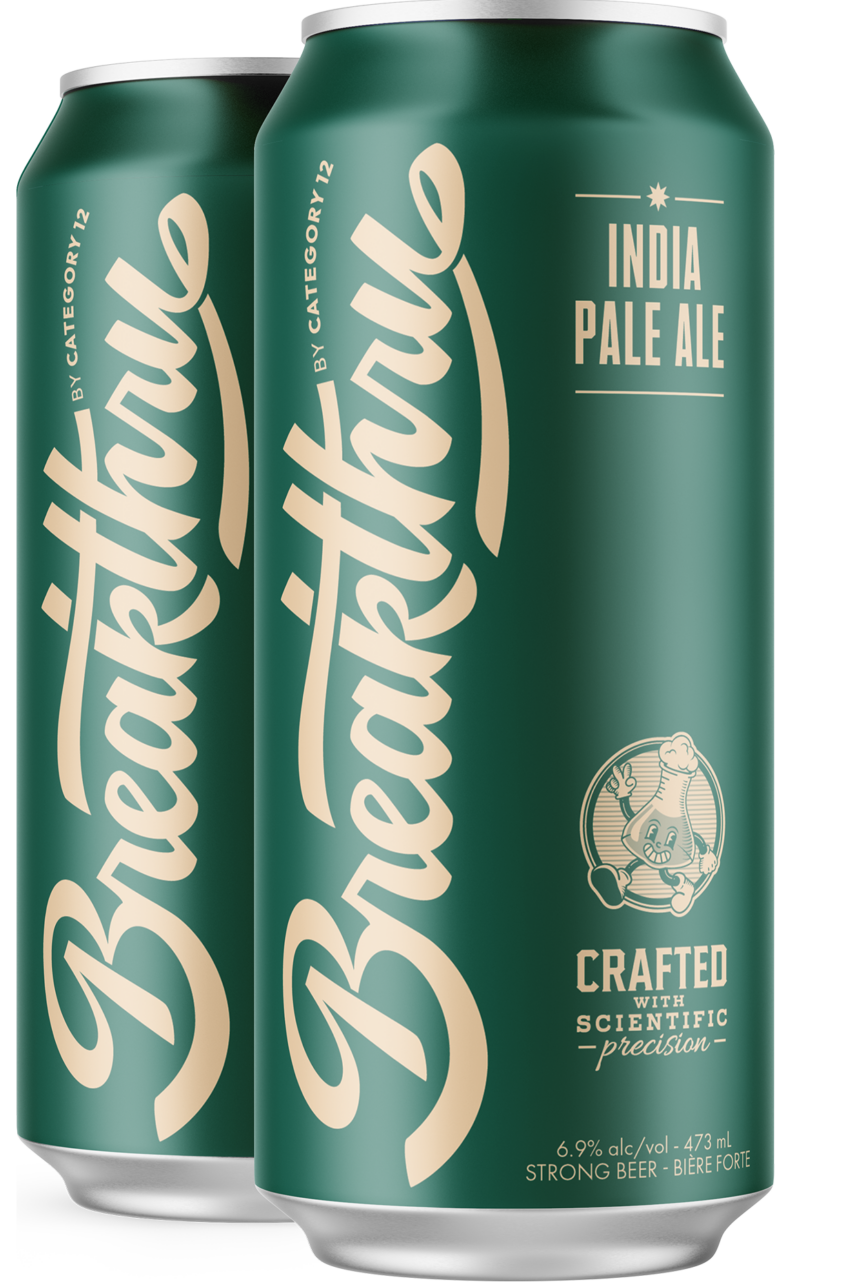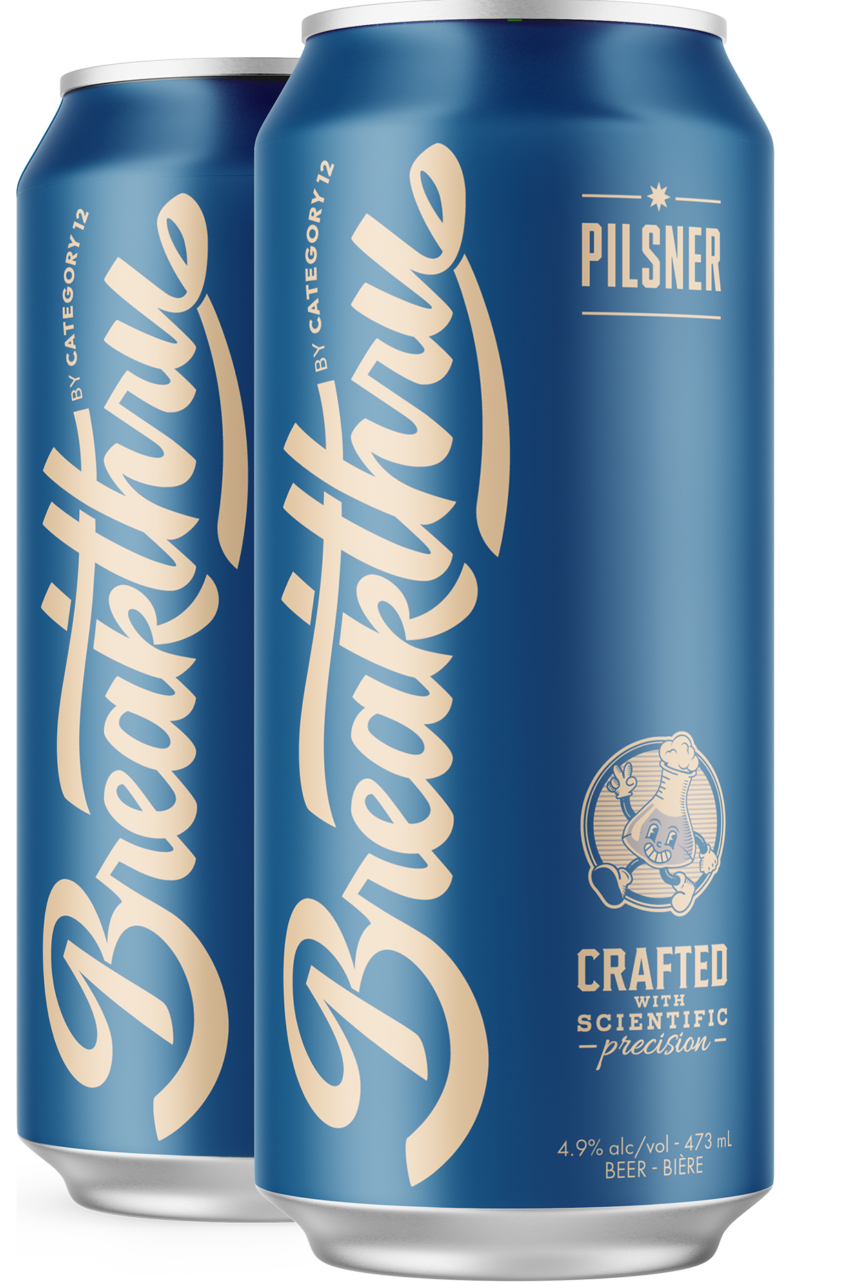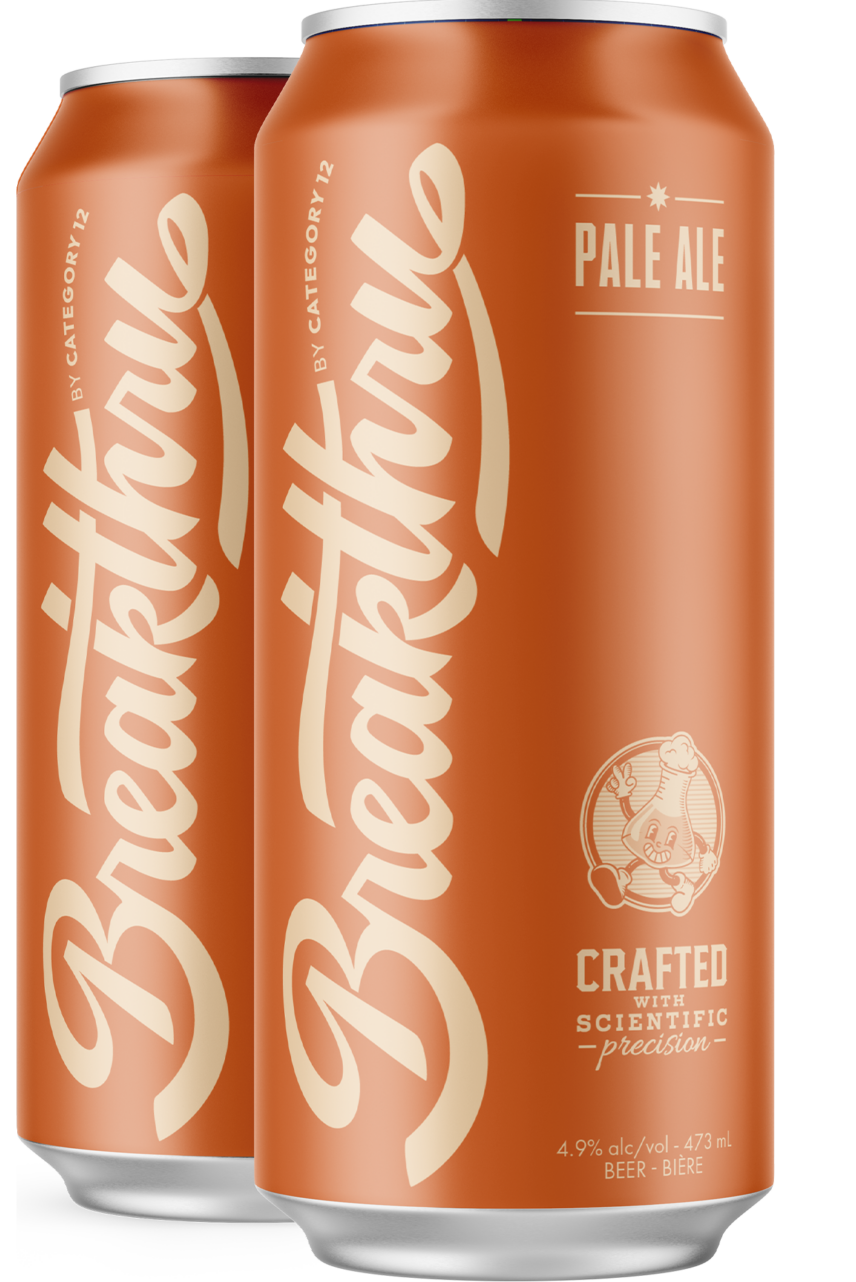Beer Crafted with scientific precision!
Named for those eureka moments, our Breakthru beers are great-tasting craft beers backed by science. After a traditional brewing process, which lends these beers their classically delicious flavour, each batch is enzymatically treated and sent off for gluten analysis before packaging and hitting the shelves.
Frequently asked questions
01. BREWING
Our Breakthru beer recipes start off at the brewhouse like every other Category 12 beer. However, thanks to our founder’s PhD in biochemistry, we’re able to create our Breatkthru beers using traditional beer ingredients, such as water, hops, yeast, and even barley. This is why Breakthru beers taste so great.
02. Fermentation
After locking in all those delicious craft beer flavours in the kettle, we transfer the beer to a fermentation vessel. We then add yeast, which does the heavy lifting of making the beer.
03. Adding the Enzyme
During fermentation, we add an enzyme that chops up any proteins (including gluten) that may have hitched a ride with the other delicious craft beer flavours. This enzyme actually targets numerous locations specifically within the celiac reactive regions of the gluten protein.
04. Testing
We confirm the gluten levels in every batch of Breakthru beer and use an external lab to test it using the R5 Competitive ELISA assay, as defined by the WHO and UN’s guidelines and codes of practice for foods globally.
05. Packaging
Only once we get our lab results back do we release the batch for packaging and shipment to stores. (Outside of Canada, 20 ppm is the international threshold for gluten-free designation of foods made from gluten-containing ingredients.)
Frequently asked questions
-
Why is Category 12’s approach to this a “Breakthru”?
Our founder’s unique research background gives him a deep fundamental understanding of the science involved in analyzing gluten in beer. We also stand behind our product and share all of our third party lab analyses with you on our website. Michael received his doctorate in biochemistry and spent a large portion of his research career developing sensitive, analytical tests to measure proteins in complex samples like human serum.
Reference: You can view Michael’s scientific publication record here on Google Scholar – his papers have been cited by 100’s of other researchers.
-
I’ve heard that it is not possible to measure gluten in fermented beverages like beer.
It is in fact possible to measure gluten in fermented beverages like beer.
The assay we use – the R5 Competitive ELISA – was internationally validated for beer in 2015. A robust, double-blinded study by 16 international laboratories, validated this modern competitive ELISA assay for measuring gluten and gluten fragments in fermented foods (and specifically beer). A competitive ELISA addresses the valid shortcomings of prior generation sandwich ELISA assays for detecting gluten which were not capable of detecting gluten fragments.
Since 2015, this assay has been validated and adopted as the recommended Method of Analysis for quantitation of residual gluten in fermented food products (beer) by:
- AOAC Official Method of Analysis (Final Action OMA 2015.05)
- AACCI Method 38-55.01
- Food & Agricultural Organization of the UN (FAO) Codex Alimentarius Type 1 Method
- American Society of Brewing Chemists (ASBC)
References:
- beyondceliac.org Q&A with the chairman of the Prolamin Working Group (PWG) explaining the significance of this assay in plain english
- J. AOAC Intl. 2015 paper resulting in the adoption of this assay as the AOAC Official Method of Analysis for detecting gluten in hydrolyzed, fermented beverages.
-
What is the difference between breakthru beers and gluten-free beers?
In Europe, enzyme treated beers that are validated using the R5 Competitive ELISA can be labeled as gluten-free and even bear the crossed-grain trademark.
In Canada, any products that are made with starting ingredients that contain gluten (like barley, as listed on our packaging) and are treated to reduce gluten must bear the following statement as required by the Canadian Food Inspection Agency:
This product is fermented from grains containing gluten and has been treated to remove gluten. The gluten content of this product cannot be verified, and this product may contain gluten.
Reference: Association of European Celiac Societies
-
DO International Celiac organizations endorse such products?
Yes, they do.
In fact the Association of European Celiac Societies even permits labeling of these types of beers as gluten-free with the crossed-grain trademark. The Food & Agricultural Organization of the UN (FAO) & United Nations Codex Alimentarius explicitly defines the testing methodology and residual gluten thresholds for such beers to be labeled as gluten-free.
We have deliberately chosen not to target our Breakthru marketing towards people with celiac disease. This decision is based on our compliance with all Canadian laws and guidelines regarding labeling as required by the CFIA. It is important to note that a large number of consumers avoid gluten and actively avoid gluten in their diets. We are confident that our product provides a great-tasting, real beer option that has been externally validated to contain less than 10 ppm of gluten.
References:
Association of European Celiac Societies
Food & Agricultural Organization of the UN (FAO) & United Nations Codex Alimentarius
-
I’ve heard that broken parts of gluten can still remain.
Proteins are long, folded chains of amino acids. Gluten is a large protein with specific stretches that cause Celiac disease (epitopes). These reactive regions contain many instances of the amino acid Proline. We use a protease enzyme to destroy gluten, which selectively cuts (hydrolyzes) the protein at each instance of Proline, destroying the reactive epitope. Even if a few cleavage sites are missed, the epitope is no longer reactive with antibodies, as confirmed by the R5 Competitive ELISA, which also relies on antibodies against this epitope and the fact remains, that the overall gluten level is well below the 20 ppm international standard of 20 ppm.
-
Helpful Resources



